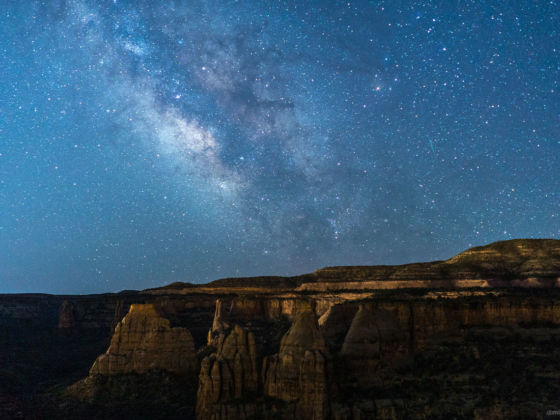WITH 14,000-FOOT PEAKS, ancient Puebloan ruins, and sand dunes rivaling those of the deserts in your imagination, Colorado’s national parks make an awesome excuse for a summer road trip. Here are some of the surprising highlights of the Centennial State’s four national parks — with one national monument thrown into the mix for good measure.
Rocky Mountain National Park
The mountain town of Estes Park serves as the base camp to one of the country’s premier national parks. Accessible from multiple points in town, including trailheads and the historic Beaver Meadows Visitor Center just off Highway 36, Rocky Mountain National Park is made up of over 265,000 acres of pristine preserved high country within Colorado’s front range. Ancient glaciers sculpted the park, and the Continental Divide runs north to south through it.
Over on the park’s west side, you can explore the wonders of Grand Lake — the town appears to pop straight out of an Old Western flick. Wooden sidewalks line dirt roads where storefronts keep cool by selling ice cream from local artisans, and the smell of bison burgers and local beer emanates from practically every pub.
Whichever entry point you choose, here are some facts about Rocky Mountain to keep in mind:
1. The park has more than 300 miles of hiking trails.

Photo: Eric Urquhart/Shutterstock
Starting from the edge of Estes Park, you can hike your way to over 150 lakes, along some of the 476 miles of streams and creeks, to world-class rock climbing, and pitch your tent at one of 585 campsites. Make it to the famous Sharkstooth and your hard work will be rewarded with one of the most spectacular views in the park — albeit after a fairly intense rock climb, which makes the feeling at the top even sweeter.
2. A single road winds its way through the entire park…
When not packed in with snow, Trail Ridge Road, the highest continuous paved road in the US, connects Estes Park and Grand Lake — including 11 miles of driving above the timberline, peaking at an elevation of 12,183 feet.
3. …but you don’t need a car to explore.
Many of the park’s most famous views can be accessed on foot, by bike, or on horseback from Grand Lake. The East Inlet Trail heads towards Lone Pine Lake, Lake Verna, and (for those willing to backpack) Boulder-Grand Pass, while the North Inlet Trail leads up to the Lake Nanita Trail and toward Ptarmigan Peak. This is wilderness made to be explored the old-fashioned way.
4. Your chances of spotting moose here are incredibly high.

Photo: Szczepan Klejbuk/Shutterstock
Since the relocation of 24 moose from Wyoming in the late 1970s, the western side of Rocky Mountain is prime territory for moose sightings. Keep an eye out while driving, and have your phone or camera at the ready, as moose are known for causing temporary road blocks — “moose jams,” if you will.
Black Canyon of the Gunnison National Park
While the Grand Canyon gets so much attention, Colorado’s Black Canyon of the Gunnison National Park provides plenty of competition, especially for rock climbers, hikers, kayakers, and campers. If ever there were a park tailored to the outdoor enthusiast, it’s this one.
5. Contrary to popular belief, the canyon isn’t named for black rock.

Photo: Brett Schreckengost
The name stems from the canyon’s depth and narrowness. At its lowest point of 2,722 feet and slimmest width of 1,100 feet, sunlight can barely reach the bottom. That’s how Black Canyon National Park got its dark name, despite being one of the most colorful spots in the state.
6. The Gunnison River drops 34 feet per mile through the canyon.
Not for the casual paddler, the Gunnison rages through the canyon, creating chasms and drops that are alarmingly breathtaking. And the force of this water over millennia has resulted in steep cliffs that attract advanced-level rock climbers from around the world. Meanwhile, fishing and rafting the Gold Medal waters immediately downstream in the Gunnison Gorge Conservation Area are ideal for adventurers seeking a less intense water experience.
Great Sand Dunes National Park
Roughly two hours from the bustle of the I-25 corridor and resting alongside a handful of the most unique towns in Colorado, the Sangre de Cristo Mountains are pretty much guaranteed to provide strange, enchanting, and often seemingly out-of-place experiences.
Take Great Sand Dunes National Park: In a state known more for its legendary 14ers and destination ski resorts, traversing 500-foot-tall dunes of sand isn’t always at the top of one’s mind in Colorado — though it should be. This former national monument became a national park in the early 2000s and is surrounded by a thriving ecosystem of wildlife, flowers, forests, and water.
7. Think you’re hearing a distant song from the campground? Think again.
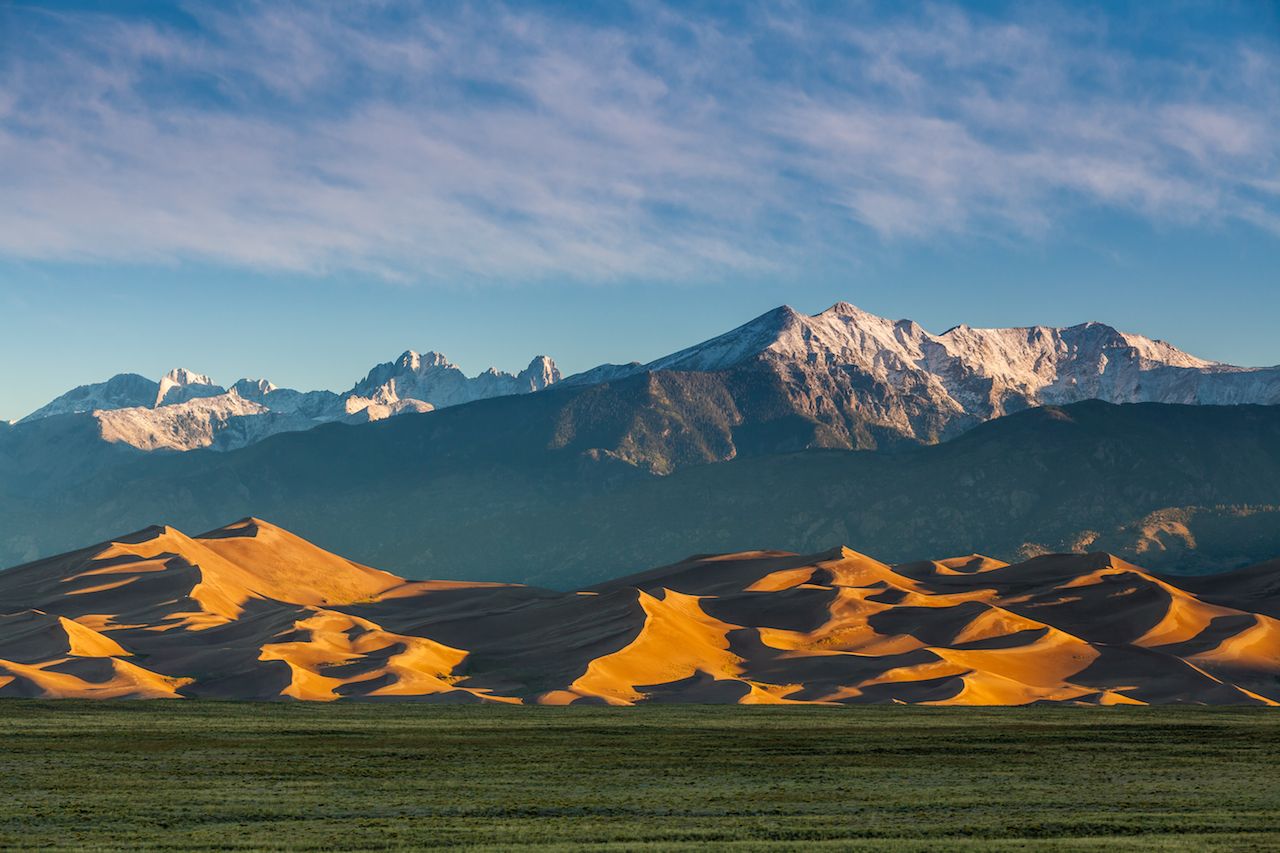
Photo: f11photo/Shutterstock
Those eerily beautiful sounds are far from the throat of a well-trained singer. In fact, what you’re hearing are avalanches. Sand avalanches, to be precise. While there’s little risk of being caught in one, this phenomenon can create a nice soundtrack that you won’t hear at any of the college bars in nearby Alamosa.
8. The park’s Star Dune is 750 feet tall.
That’s 750 feet of sand you’ve got to hike up in order to summit the park. While it may not sound like much in comparison to the Sangre de Cristo peaks towering immediately to the east, sand isn’t known for holding up under feet quite like solid ground. This is particularly true on the descent, which is why some epic turns on a sandboard or a nice, sloppy butt-slide may be the best way to round out your day.
Mesa Verde National Park
Farther west along Highway 160, between Mancos and Cortez, lies the greatest example of Ancestral Puebloan architectural mastery. Get all of the yelling and laughing out at the Sand Dunes, because Mesa Verde National Park is a silent, awe-inspiring kind of place.
9. Cliff dwellings helped the Ancestral Puebloans harness solar energy.
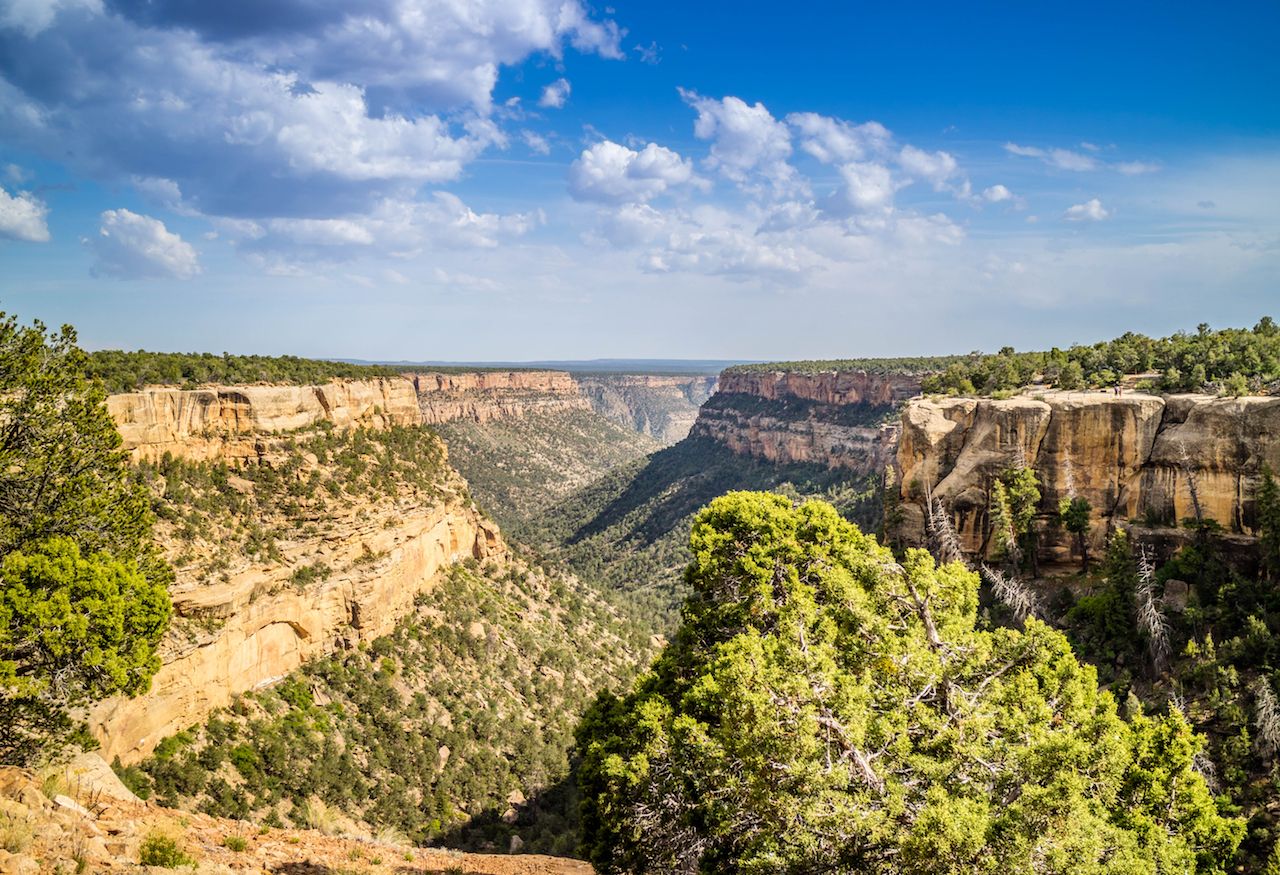
Photo: Cheri Alguire/Shutterstock
Building communities on the side of a cliff is great for defending against attacks and taking shelter from harsh weather. But these dwellings were also constructed at an angle that helped their residents use the sun for heat during winter, often keeping them 10-20 degrees warmer than the surface temperature on the canyon floor below.
10. Researchers are still uncovering new sites in the park.

Photo: Daniel Holm Hansen
To date, over 4,400 sites have been identified within Mesa Verde National Park — pretty incredible considering these structures were built between the 6th and 12th centuries. And, in part because this is also a UNESCO World Heritage Site, each dwelling discovered is thoroughly investigated and preserved. So visit again after a few years and there might be something brand new to check out.
Colorado National Monument
Colorado National Monument towers over the Grand Valley on the northeast end of the Colorado Plateau, just west of Grand Junction. Rim Rock Drive routes visitors through the monument and features tunnels and incredible views of the park’s rock monoliths.
11. The area receives less than 12 inches of rainfall a year.
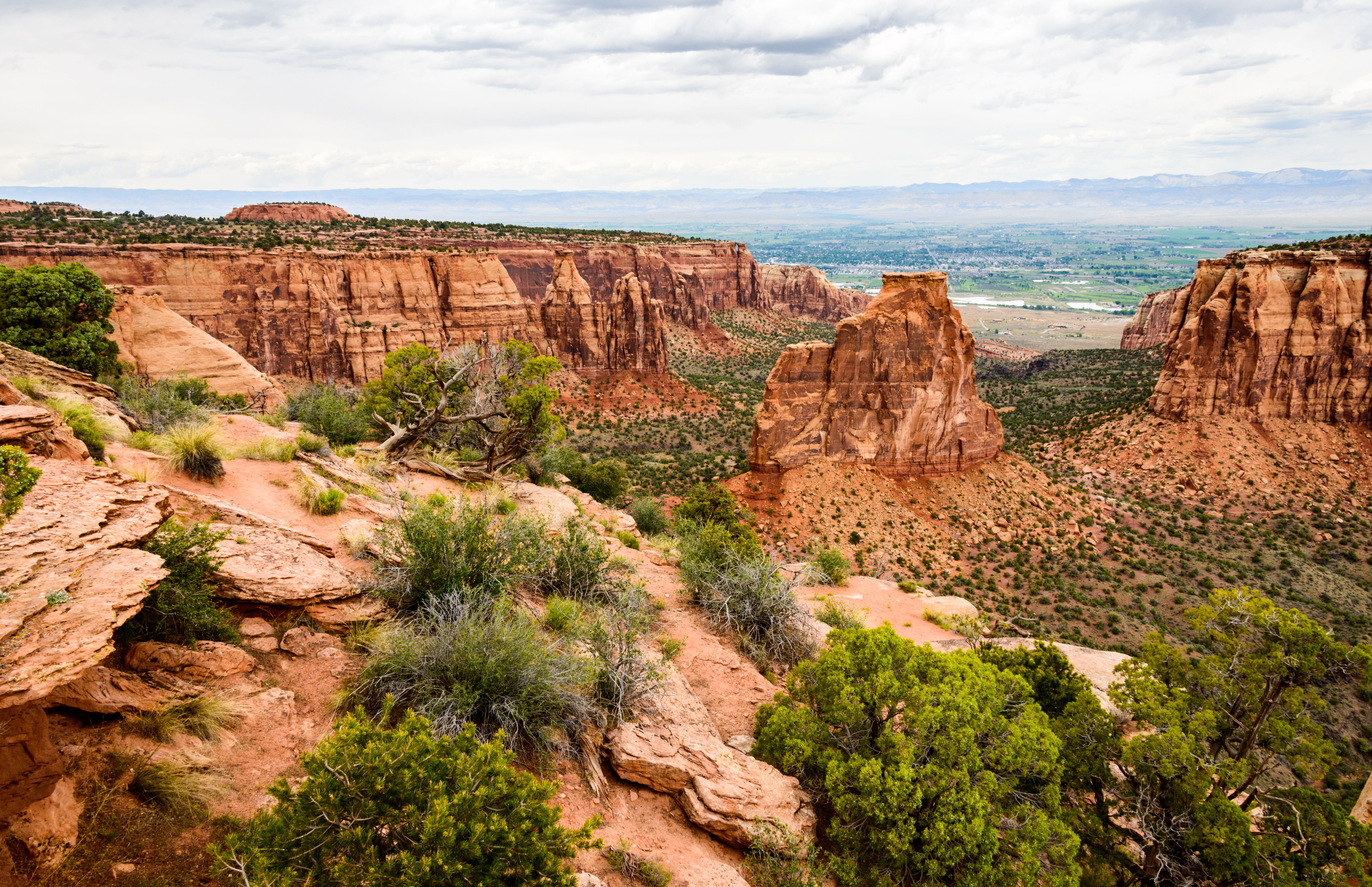
Photo: Zack Frank/Shutterstock
In a semi-arid desert region — complete with blazing hot days and cool nights in the summer — Colorado National Monument looks and feels more like canyon country than mountainous Colorado. This all means you’d be hard-pressed to find better cycling terrain than western Colorado. Within the monument, Rim Rock Drive provides a challenging road biking route to complement the year-round hiking.
12. A rugged explorer is responsible for the monument’s place in the National Park System.
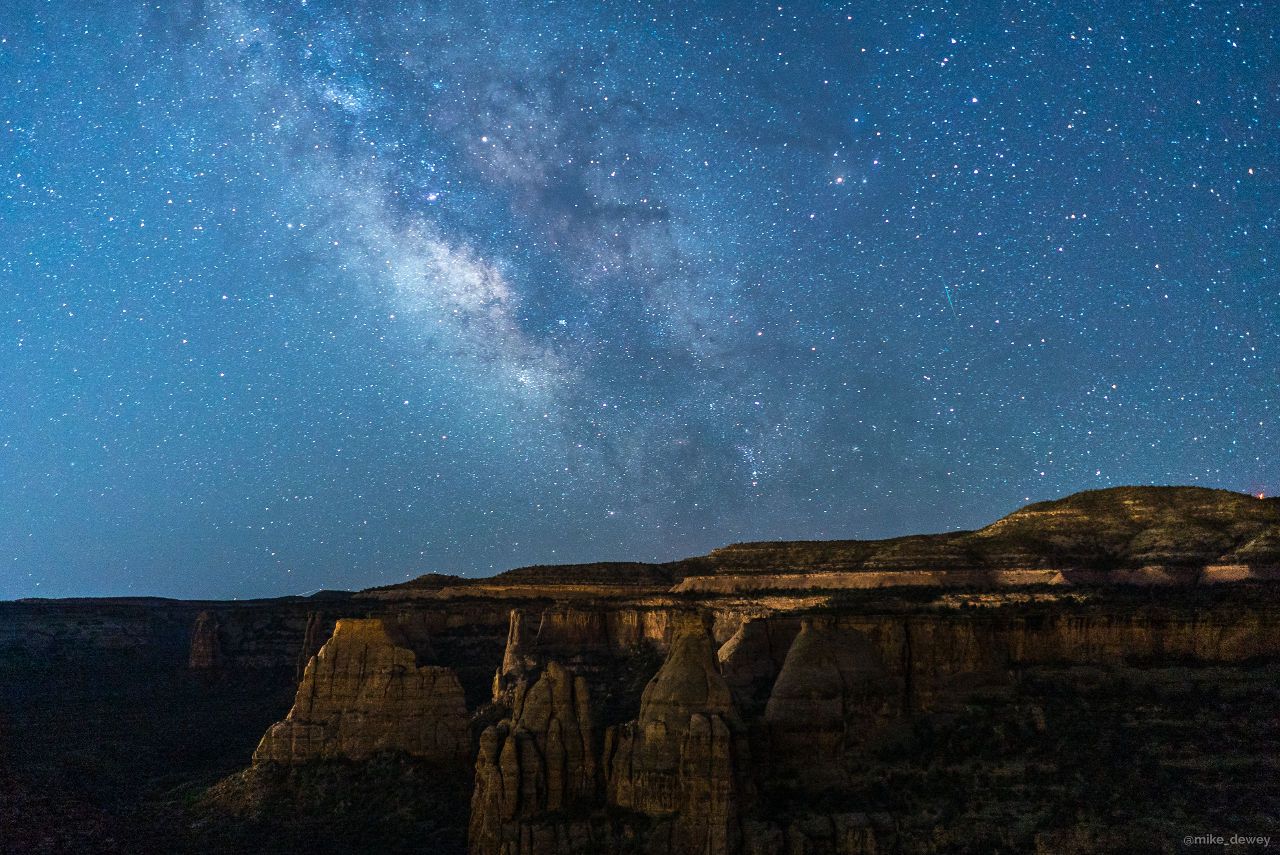
Photo: Mike Dewey
John Otto became the first custodian of Colorado National Monument after lobbying for national park status in the early 1900s. Otto explored the canyons that now lie within the monument upon arriving in Grand Junction in 1906, spots that were previously thought of as impassable. Shortly after, he began advocating for protection of the area. Because of his efforts, Otto now rightfully enjoys legend status in the Grand Valley.

